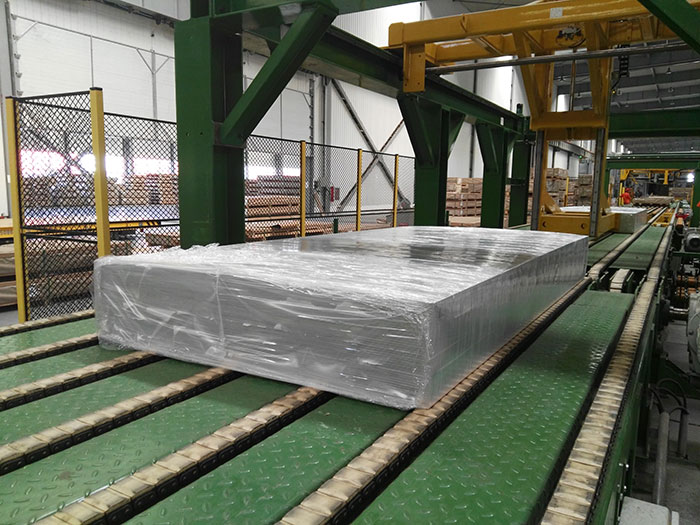2124 aluminium alloy belongs to Al-Cu-Mg alloy. It was developed by Alcoa in 1970s. It is a high-purity, high-strength and high-toughness aluminium alloy for Aeronautics by adjusting composition, improving purity and adopting new heat treatment process on the basis of 2024 aluminium alloy. 2124 alloy not only has the same strength as 2024 alloy, but also has better fracture toughness and fatigue properties.
2124 T851 aluminum alloy plate, which is used to manufacture aircraft structural parts requiring heat resistance, corrosion resistance and stress tolerance. Usually, the service temperature does not exceed 175 C. In recent years, the heat treatment system, precipitated phase and fracture behavior of 2124 alloy have been extensively studied at home and abroad. With the development of aviation technology, materials are required to have good temperature resistance. It is pointed out that when the flight speed of the aircraft approaches Mach 3, some parts will be exposed to short-term thermal exposures ranging from 150 to 300 C. In many cases, airplane components exposed to short-term heat still work at room temperature for most of the time. Therefore, it is necessary to study the influence of heat exposure on the normal temperature properties of 2
124 T851 aluminum alloy plate in order to grasp the service temperature limit of the alloy.
.jpg)
The heat exposure of
2124 T851 aluminum alloy plate is higher than the final aging temperature (190 °C). The strength decreases while the elongation increases. The higher the temperature and the longer the time, the faster the strength decreases and the elongation increases. When the alloy was exposed to 250 °C for 50 h and 100 h, its_0.2 decreased 260 MPa and 280 MPa, and its elongation increased by about 23% and 55%. When the thermal exposure temperature is lower than the final aging temperature, the mechanical properties of the alloy will not change much if the thermal exposure temperature is below 150 °C. When the thermal exposure temperature is lower than the final aging temperature but higher than 150 °C, the mechanical properties of the alloy will not change much if the thermal exposure time is less than 100 h, but if the thermal exposure time is more than 100 h, the strength and plasticity of the alloy will decrease. The strength of the alloy decreased by 0.95% and 3.2% after thermal exposure at 175 °C for 100 h and 500 h, respectively. After thermal exposure at 150 °C for 100 h and 500 h, the strength of the alloy decreased by 11.4% and 19% respectively.

Under thermal exposure, the main causes of mechanical properties degradation of
2124 T851 aluminum alloy plates are the growth and coarsening of S'phase, the main strengthening phase in grain, and the widening of precipitation-free zone near grain boundary. The microstructures of the alloy did not change much when exposed to heat below 175 °C. When exposed to heat at 175 °C, the S phase coarsened and the precipitation-free zone widened. When exposed to heat above 200 °C, the S phase coarsened obviously, the equilibrium phase grew up and the precipitation-free zone widened obviously. Especially when exposed temperature increased to 250 °C, the precipitation phase changed from needle-like to strip-like or strip-like. The density of precipitated phase decreases markedly in lath shape.


.jpg)



